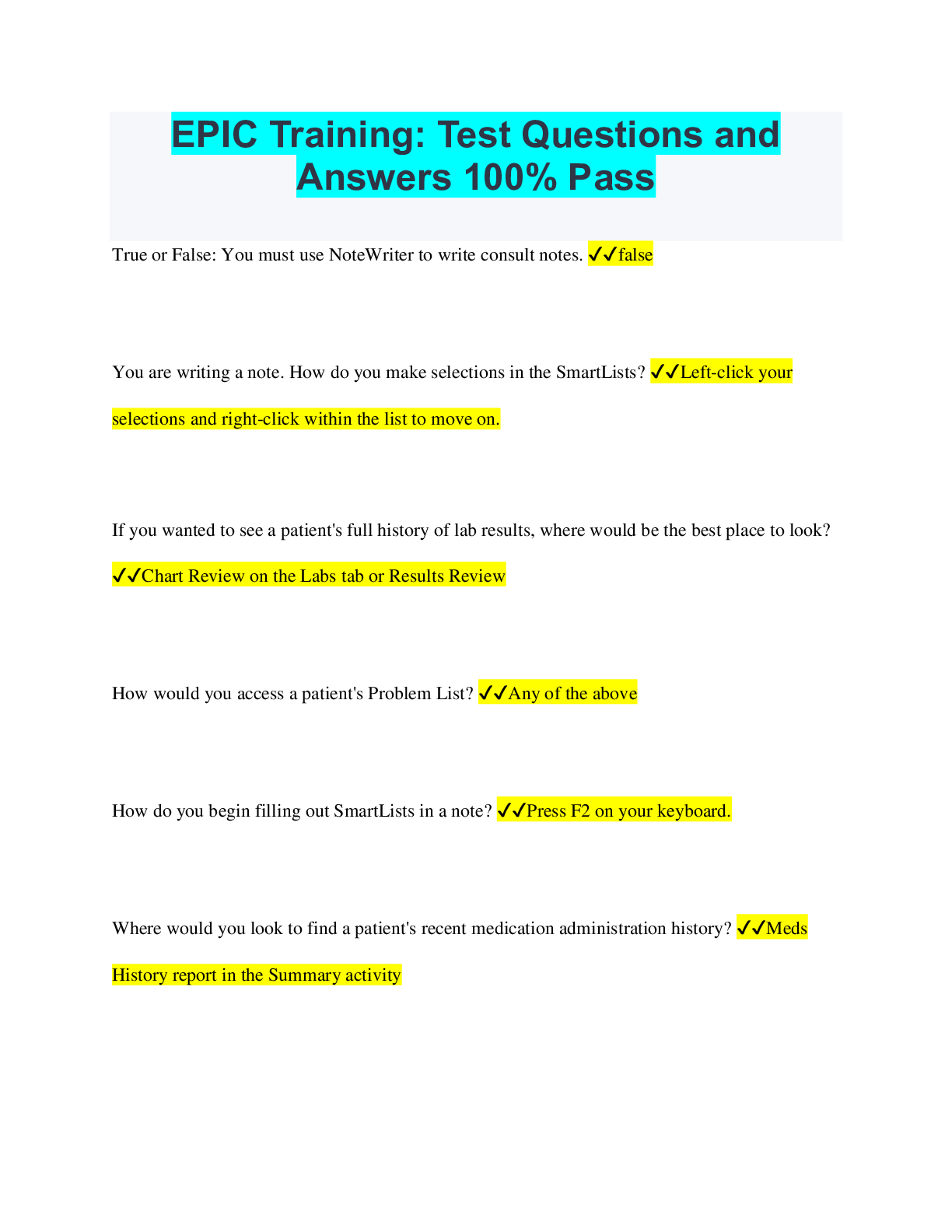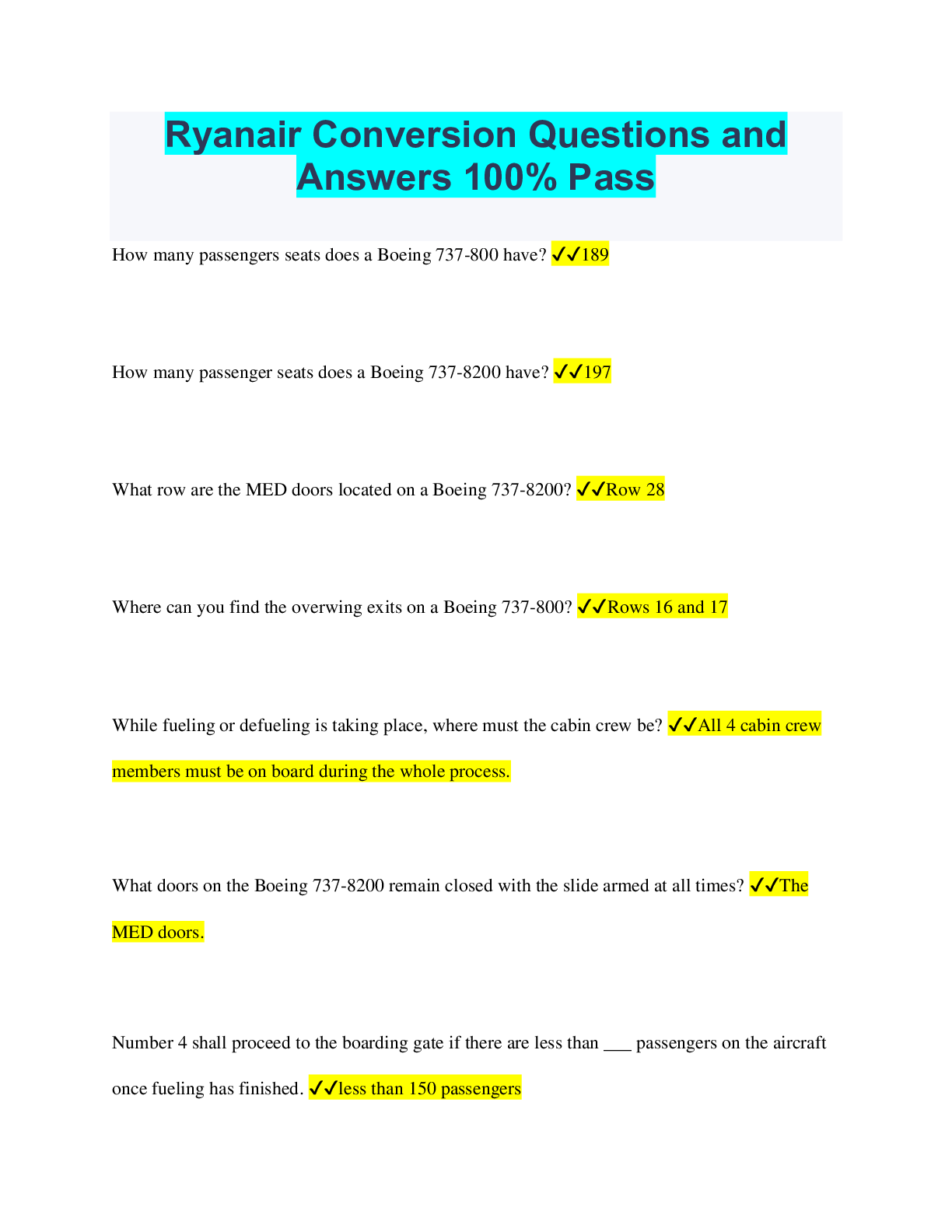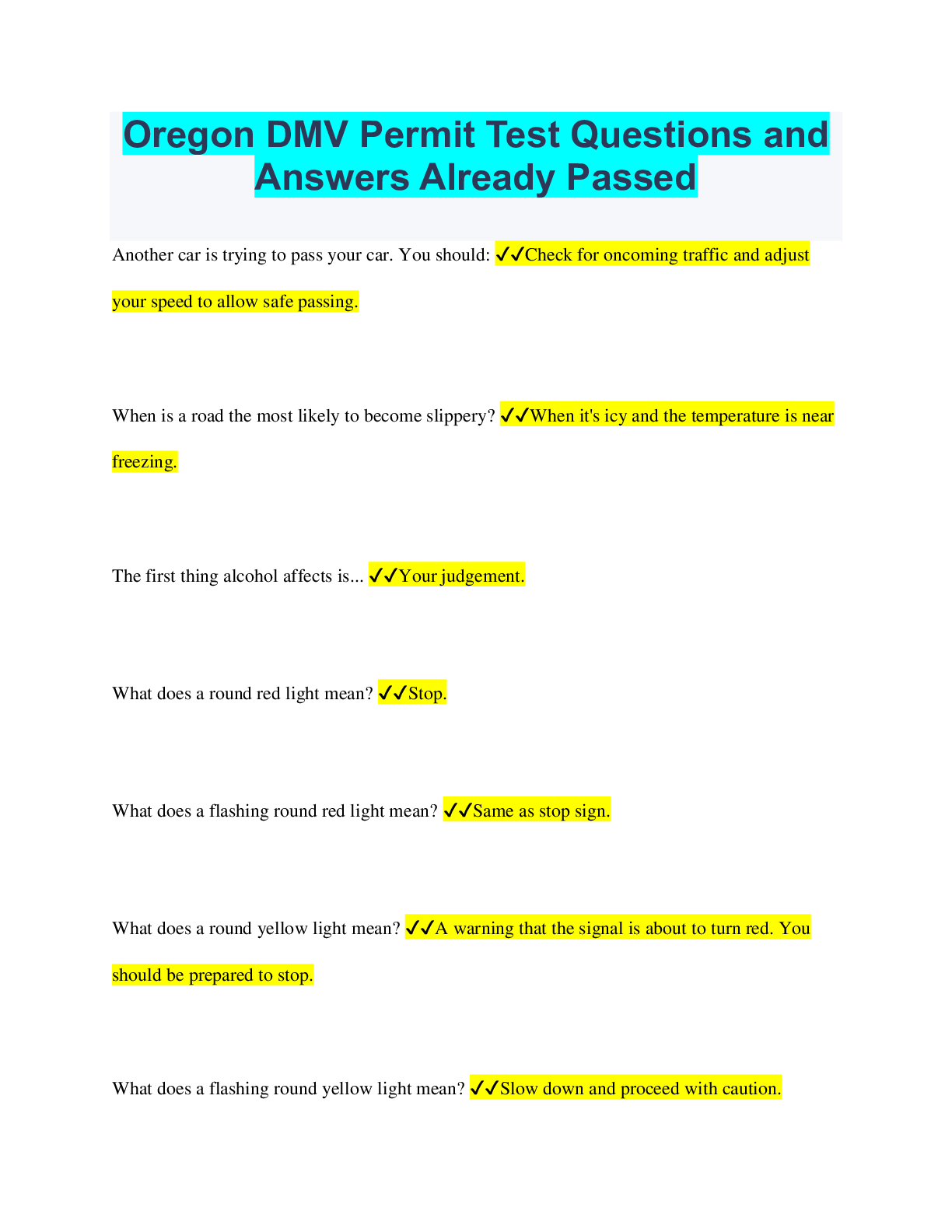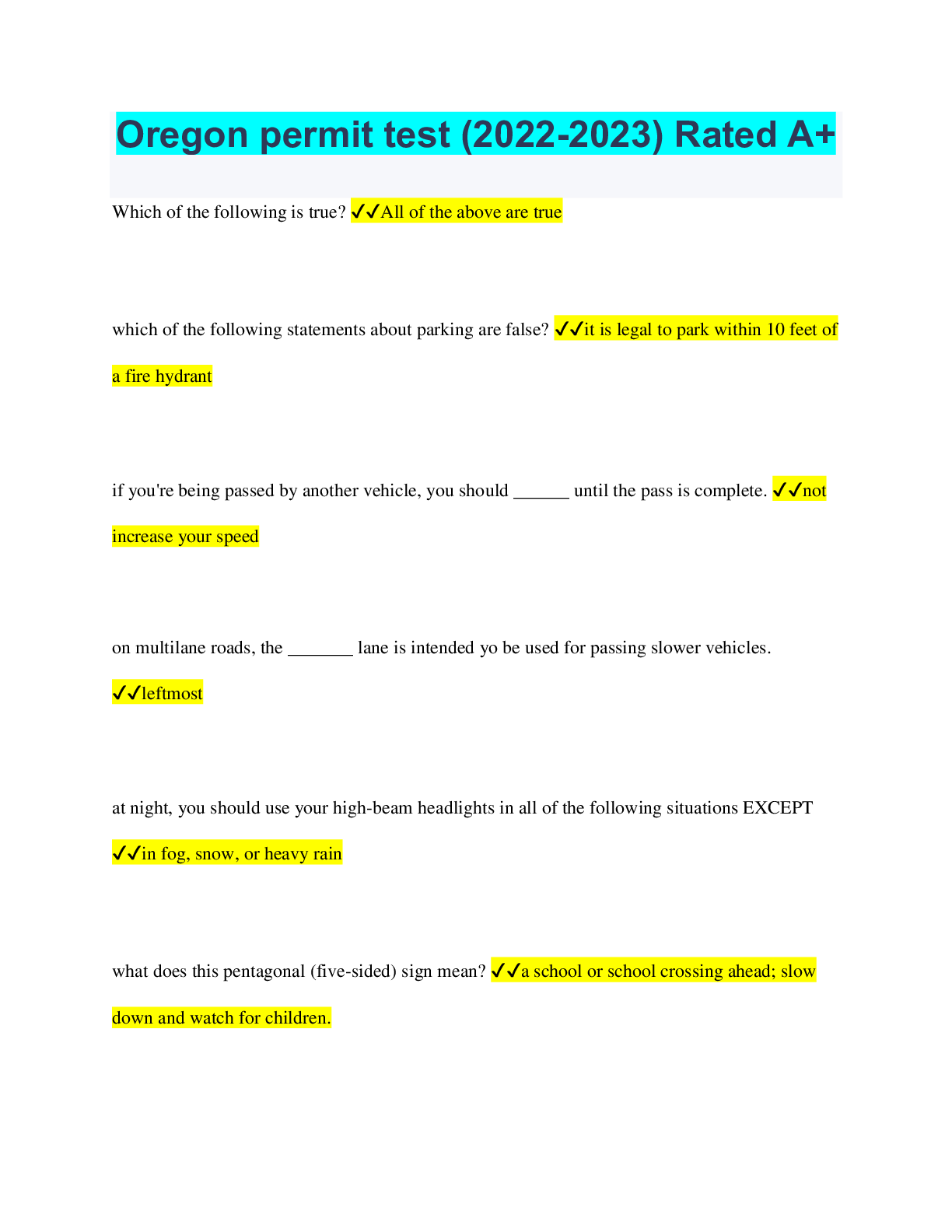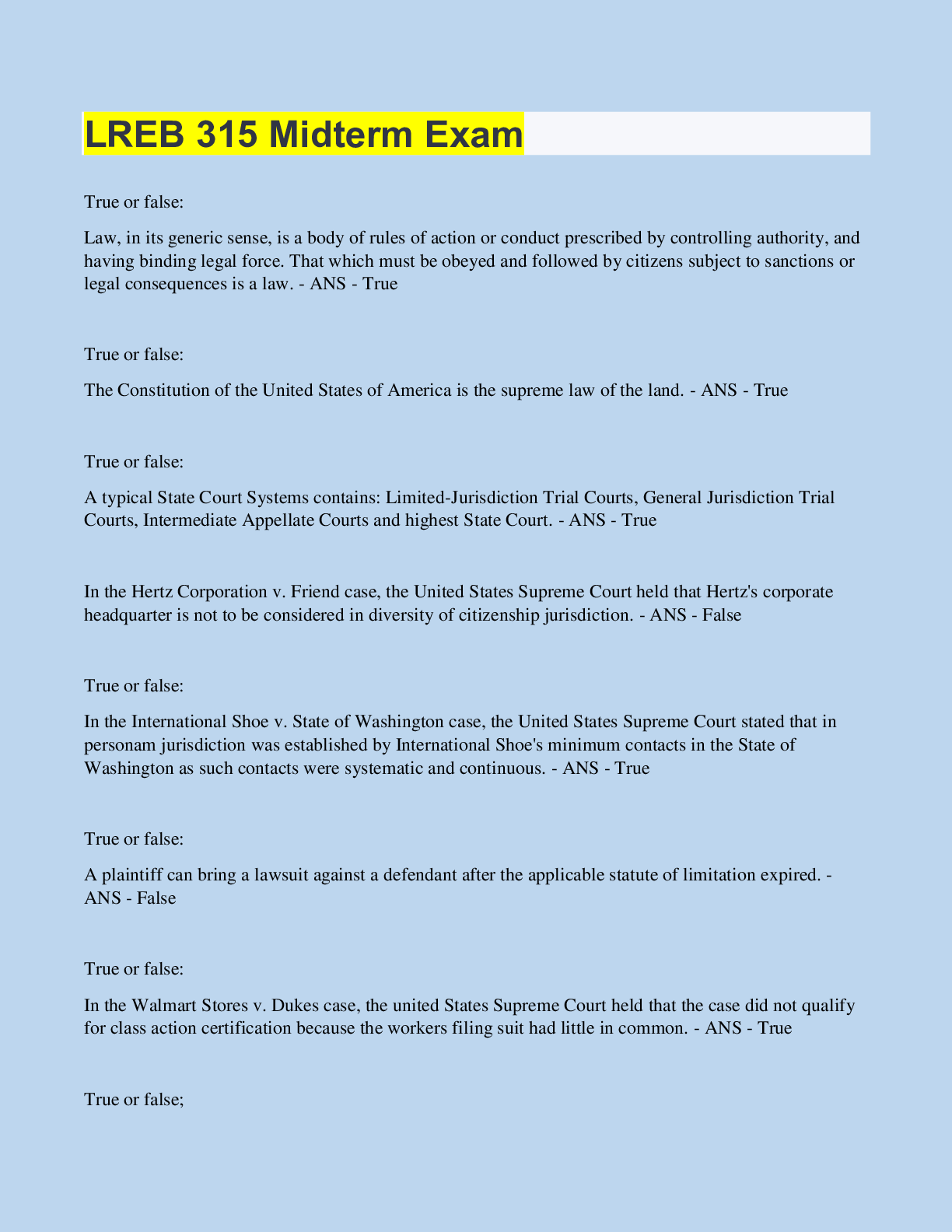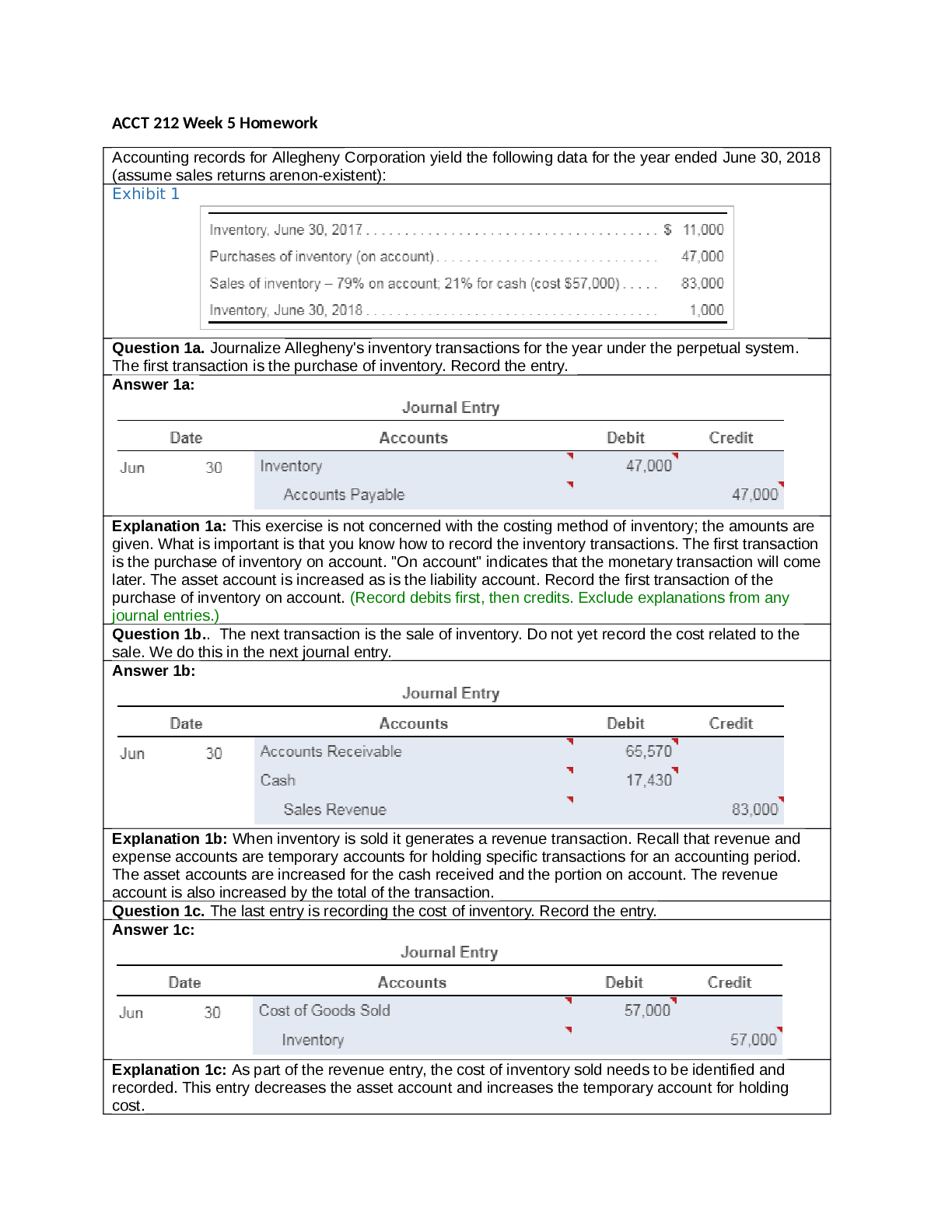*NURSING > QUESTIONS & ANSWERS > Cardio APEA Questions and well Elaborated Answers Graded A+ (All)
Cardio APEA Questions and well Elaborated Answers Graded A+
Document Content and Description Below
The lymphatic ducts drain into the: arterial system. venous system. Correct arteriovenous system. capillary bed. Incorrect Explanation: The lymphatic ducts drain into the venous system. Questio... n 2: While auscultating the patient's heart, a medium, soft murmur is audible. It is pansystolic and heard loudest at the apex with radiation to the left axilla. These findings are consistent with: tricuspid regurgitation.mitral regurgitation. Correcta ventricular septal defect.an innocent murmur. Incorrect Explanation: Mitral regurgitation produces a pansystolic, harsh murmur heard loudest at the apex with radiation toward the left axilla. The intensity of the murmur can be soft or if there is an atrial thrill, it can be loud. With tricuspid regurgitation, the murmur is audible loudest at the left sternal border with radiation to the right sternal border, xiphoid area, or to the left midclavicular line. It produces a blowing sound and is pansystolic. The murmur of an uncomplicated ventricular septal defect has a high pitch and is usually heard throughout systole. An innocent murmur is heard loudest at mid systole near the second to fourth intercostal spaces between the left sternal border and the apex. It usually decreases or disappears when sitting. Question 3: Which of the following group of symptoms would be suggestive of an infant experiencing a congenital heart defect associated with a decreased pulmonary blood flow pattern? Tissue perfusion greater than 3 seconds, bluish colored skin, and poor feeding Correct Abnormal heart sounds, capillary refill less than 2 seconds, and oxygen saturation less than 95% Capillary refill less than 2 seconds, tissue perfusion less than 3 seconds, and oxygen saturation greater than 95% Poor feeding, audible heart murmur, and oxygen saturation greater than 95% Explanation: Infants with defects resulting from decreased pulmonary blood flow have cyanosis because of desaturated blood entering systemic circulation and/or because of the inability to get blood to the lungs. Tetralogy of Fallot (TOF), pulmonary atresia and tricuspid atresia all fall in this category and are considered cyanotic defects. Due to the ventricular septal defect in TOF, the absence of the tricuspid valve or pulmonary valve in tricuspid and pulmonary atresia, one should hear abnormal heart sounds either due to the murmur in TOF or single heart sounds of S1 or S2 in pulmonary atresia or tricuspid atresia. Usually these infants have activity intolerance and therefore, experience failure to thrive because of their inability to consume enough formula to gain weight appropriately. Capillary refill is usually prolonged due to poor oxygenation and poor perfusion secondary to the defect as well as the O2 sats being lower than normal, sometimes even in the 80% range. Question 4: Right atrial pressure can be determined by: palpating the carotid pulse. Incorrect identifying the pulsations of the right jugular vein. Correct analyzing the arterial blood gases. assessing for dependent edema. Explanation: Jugular venous pressure reflects pressure in the right atrium and is best assessed from pulsations in the right internal jugular vein. This is an indicator of cardiac function and right heart hemodynamics. Palpating the carotid artery denotes arterial pressure; analyzing blood gases reflects the status of the arterial blood. Assessing for dependent edema is a reflection of heart failure and poor venous return and not atrial pressure. Question 5: When assessing the heart rate of a healthy 13-month-old child, which one of the following sites is the most appropriate for this child? Apical pulse at the 5th intercostal space right midclavicular line Apical pulse between the 3rd and 4th intercostal space in the left midclavicular line Correct Apical pulse to the right of the midclavicular line in the 3rd intercostal space Apical pulse in the 5th intercostal space left midclavicular line Incorrect [Show More]
Last updated: 2 years ago
Preview 1 out of 42 pages
.png)
Buy this document to get the full access instantly
Instant Download Access after purchase
Buy NowInstant download
We Accept:

Reviews( 0 )
$13.00
Can't find what you want? Try our AI powered Search
Document information
Connected school, study & course
About the document
Uploaded On
Aug 03, 2021
Number of pages
42
Written in
Additional information
This document has been written for:
Uploaded
Aug 03, 2021
Downloads
0
Views
123

.png)


